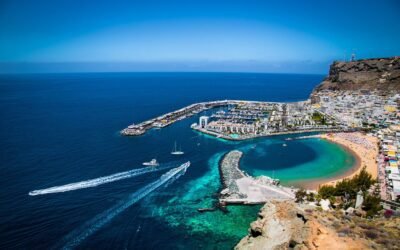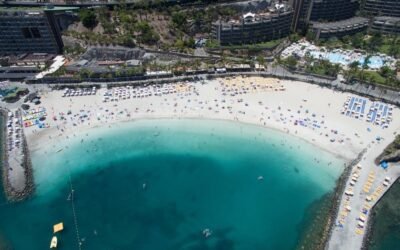Are you planning a trip to the Canary Islands and can’t decide between Gran Canaria and Tenerife? Both islands offer a wide range of attractions and activities, but they differ in terms of landscapes, culture, and nightlife. In this article, we’ll compare Gran Canaria and Tenerife based on several factors to help you make an informed decision.
Table of Contents
- Introduction
- Location and Size
- Climate and Weather
- Beaches and Natural Landscapes
- Culture and History
- Activities and Attractions
- Nightlife and Entertainment
- Accommodation and Prices
- Transportation and Accessibility
- Safety and Security
- Conclusion
- FAQs
- Which island is better for families?
- Can I visit both islands on the same trip?
- What are the best beaches in Gran Canaria and Tenerife?
- What is the best time of year to visit Gran Canaria and Tenerife?
- Is it safe to rent a car in the Canary Islands?
1. Introduction
The Canary Islands are a popular holiday destination for millions of tourists from around the world. With their pleasant year-round climate, stunning beaches, and diverse landscapes, the seven main islands offer something for everyone. Gran Canaria and Tenerife are two of the most popular islands and are often compared to each other due to their similarities and differences.
2. Location and Size
Gran Canaria is located in the middle of the Canary Islands, between Tenerife and Fuerteventura. It is the third largest island in the archipelago, with a surface area of 1,560 km². Tenerife, on the other hand, is the largest island in the Canary Islands, with a surface area of 2,034 km². It is located to the west of Gran Canaria and is separated from it by a distance of about 80 km.
3. Climate and Weather
Both Gran Canaria and Tenerife enjoy a subtropical climate with mild temperatures throughout the year. However, there are some differences in weather patterns and microclimates. Gran Canaria is known for its pleasant, sunny weather, especially in the south of the island. Tenerife, on the other hand, has more varied weather conditions due to its mountainous terrain and can experience more rainfall than Gran Canaria.
4. Beaches and Natural Landscapes
Both Gran Canaria and Tenerife are blessed with beautiful beaches and stunning natural landscapes. Gran Canaria is known for its golden sand dunes, rocky coves, and turquoise waters. Tenerife, on the other hand, has black sand beaches, volcanic landscapes, and lush forests. Both islands have national parks that offer hiking trails, scenic drives, and breathtaking views.
5. Culture and History
Gran Canaria and Tenerife have a rich history and culture that are reflected in their architecture, museums, and festivals. Gran Canaria has a strong tradition of folk music, dance, and crafts, and is home to several museums and historical sites. Tenerife, on the other hand, has a more cosmopolitan and international vibe, with modern shopping centers, art galleries, and theaters.

6. Activities and Attractions
Both Gran Canaria and Tenerife offer a wide range of activities and attractions for tourists. Gran Canaria is popular for its water sports, such as surfing, windsurfing, and scuba diving, as well as its amusement parks, such as Aqualand and Holiday World. Tenerife, on the other hand, is known for its
Theme parks, such as Siam Park and Loro Parque, as well as its dolphin and whale watching tours. Both islands have plenty of opportunities for hiking, cycling, and golfing, as well as sightseeing tours and cultural experiences.
7. Nightlife and Entertainment
If you’re looking for a lively nightlife and entertainment scene, both Gran Canaria and Tenerife won’t disappoint you. Gran Canaria has several popular nightlife areas, such as Playa del Inglés and Maspalomas, where you can find a variety of bars, clubs, and live music venues. Tenerife, on the other hand, has a more upscale and sophisticated nightlife, with trendy beach clubs, cocktail bars, and casinos.
8. Accommodation and Prices
Both Gran Canaria and Tenerife offer a wide range of accommodation options, from budget-friendly hostels and apartments to luxury resorts and villas. Prices can vary depending on the location, season, and type of accommodation, but in general, Tenerife is slightly more expensive than Gran Canaria. However, both islands offer good value for money compared to other European holiday destinations.
9. Transportation and Accessibility
Getting around Gran Canaria and Tenerife is relatively easy and convenient, thanks to their well-developed transportation infrastructure. Both islands have airports that offer direct flights to major European cities, as well as ferry connections to other Canary Islands and the mainland. You can also rent a car, take a taxi, or use public transportation to explore the islands.
10. Safety and Security
Gran Canaria and Tenerife are generally safe and secure destinations for tourists. Both islands have low crime rates and a friendly and welcoming local population. However, as with any tourist destination, you should take basic precautions to avoid pickpocketing, scams, and other petty crimes. You should also be aware of the risks associated with outdoor activities, such as hiking and swimming, and follow safety guidelines and recommendations.
11. Conclusion
In conclusion, both Gran Canaria and Tenerife offer plenty of reasons to visit them. If you’re looking for a sunny and beachy holiday with a lively nightlife and entertainment scene, Gran Canaria might be your best bet. If you’re more interested in natural landscapes, outdoor activities, and cultural experiences, Tenerife might be a better choice. Ultimately, the decision depends on your personal preferences, budget, and travel plans.
12. FAQs
Which island is better for families?
Both Gran Canaria and Tenerife are family-friendly destinations with plenty of attractions and activities for all ages. Gran Canaria has several amusement parks and water sports centers, while Tenerife has theme parks, animal parks, and natural reserves.
Can I visit both islands on the same trip?
Yes, you can visit both Gran Canaria and Tenerife on the same trip by taking a ferry or a flight between the islands. This will allow you to experience the best of both worlds and compare their differences and similarities.
What are the best beaches in Gran Canaria and Tenerife?
Some of the best beaches in Gran Canaria include Playa del Inglés, Maspalomas, and Puerto Rico, while Tenerife has black sand beaches, such as Playa de las Teresitas, and natural swimming pools, such as Los Gigantes.
What is the best time of year to visit Gran Canaria and Tenerife?
The Canary Islands enjoy a mild and sunny climate throughout the year, but the best time to visit depends on
your preferences and activities. The peak season is from November to April, when the weather is warm and dry, and the crowds are high. However, if you’re looking for a quieter and more affordable time to visit, you can consider the low season from May to October.
Is it necessary to rent a car in Gran Canaria and Tenerife?
It’s not necessary to rent a car in Gran Canaria and Tenerife, as both islands have a reliable and efficient public transportation system. However, if you want to explore the islands at your own pace and visit remote or off-the-beaten-path locations, renting a car might be a good idea.
What is the food like in Gran Canaria and Tenerife?
The cuisine of Gran Canaria and Tenerife is influenced by Spanish, African, and Latin American flavors, with a focus on fresh seafood, meat, vegetables, and fruits. Some of the most popular dishes include papas arrugadas (wrinkled potatoes), mojo sauce, sancocho (salted fish stew), and gofio (toasted cornmeal).
Conclusion
In summary, both Gran Canaria and Tenerife are beautiful and diverse islands that offer something for every type of traveler. Whether you’re looking for a relaxing beach holiday, an adventurous outdoor experience, a cultural immersion, or a lively nightlife scene, you can find it in one of these islands. By considering the factors mentioned in this article, such as the climate, beaches, activities, accommodation, transportation, and safety, you can make an informed decision about which island to choose for your next vacation.



